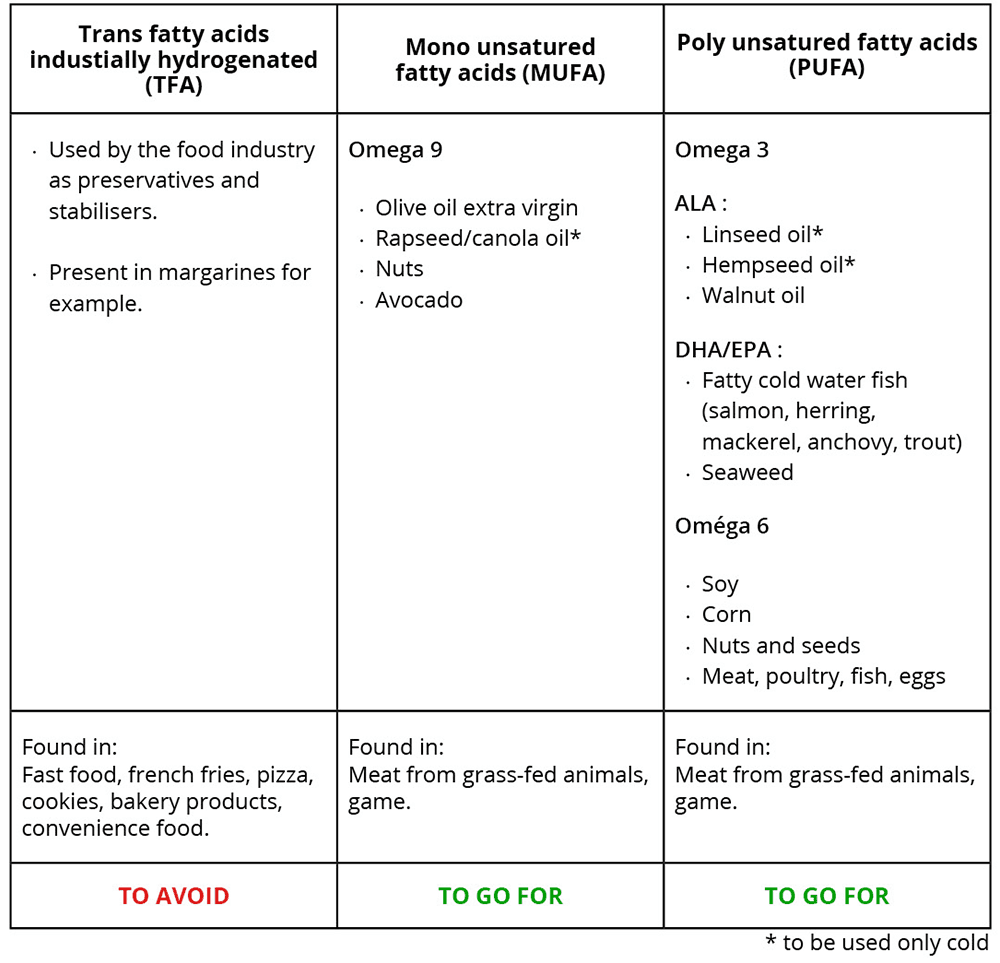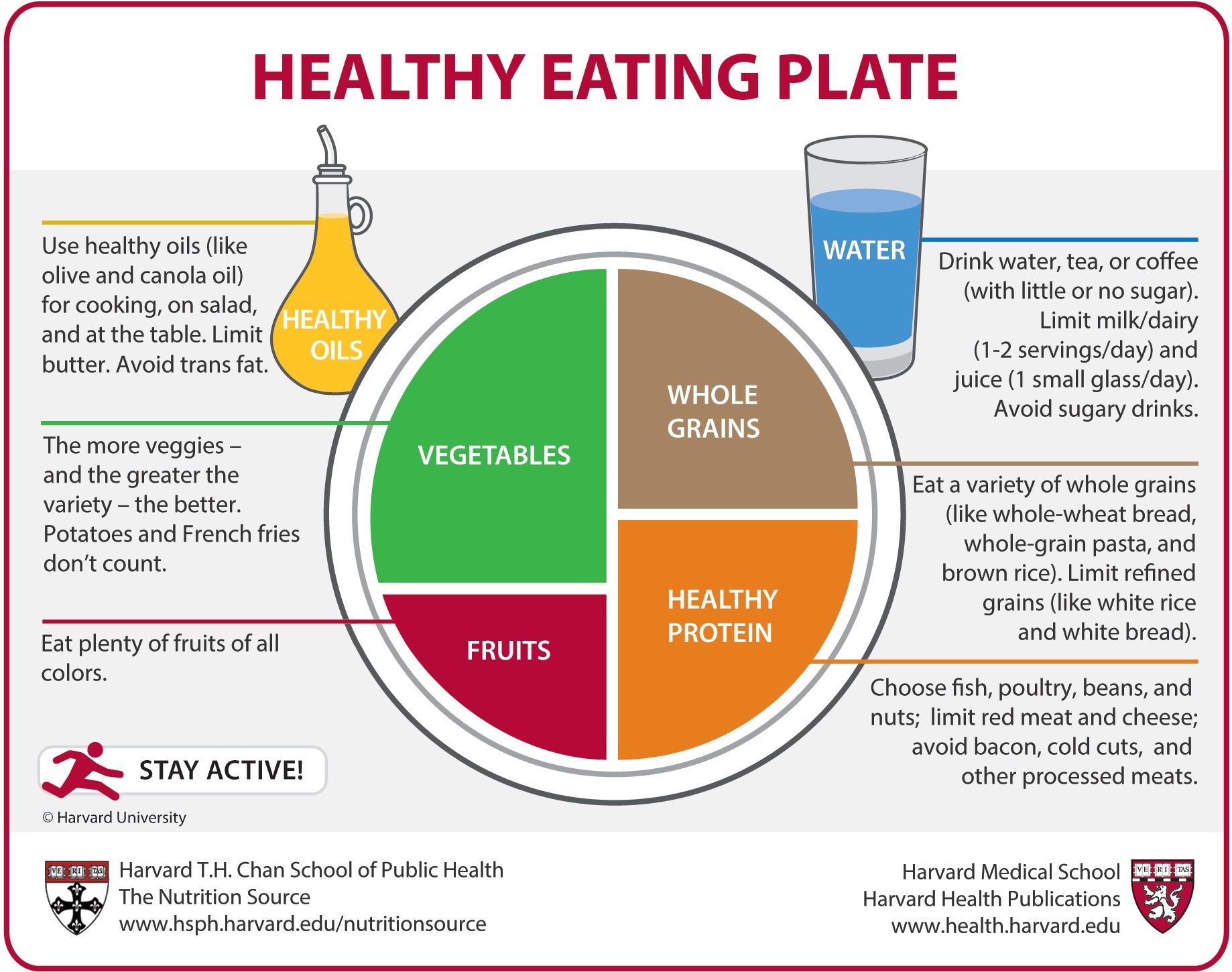Downloads
Fats, Cholesterol & Co.
Along with carbohydrates and protein, fats belong to one of the three main nutritional groups. They provide us with the necessary energy to keep the body running physically and functionally: Building, breaking down and remodeling processes take
place in our body non-stop, the cardiovascular system is active non-stop and our brain consumes a whole 20% of the energy generated in us, whether during the day or at night.
In addition, we need vitamins, minerals, oligo-elements and sufficient fluids (approx. 30 ml/kg body weight in the form of water, tea and, for those who like it, up to 3 cups of coffee) every day.
Of the three main nutrient groups, fat provides more than twice as many calories as carbohydrates and protein during "cell combustion". What the body does not use as energy, it stores in depots.
For a long time, fats were discredited as fattening nutrients. Thanks to modern research and studies, this has changed decisively!
The decisive factor is not only the quantity, but also the composition, because not all fats are the same!
However, all fats have a similar basic structure and consist of a compound between the alcohol glycerol and fatty acids of different lengths.
Long, short and medium chain fatty acids (= trigycerides) are described, which in turn are divided into saturated, unsaturated and trans fatty acids (TFA).
Cholesterol
Cholesterol is a substance, 80% of which is formed in our liver and only the smaller part comes from food (e.g. fatty meat from offal, liver sausage, egg yolk or butter).
Fats perform important functions in our body: the walls of our approximately 75 trillion cells consist largely of fat, they supply vital fatty acids that the body cannot produce itself and ensure the absorption of the fat-soluble
vitamins E, D, K and A from food. Fat provides our organs with a protective shell against shocks and insulates our bodies from the cold. Cholesterol supports and strengthens the cell walls and regulates the communication between the cells. It is
also needed for the production of the sex hormones oestrogen and testosterone, as well as for the production of the body’s own vitamin D.
Trans-fatty acids
Trans-fatty acids are generated by industrial processes. They are inexpensive, durable and solid and are incorporated and added to food in large numbers for preservation and flavour enhancement. They are artificially hydrogenated vegetable fats
that have no actual nutritional value, on the contrary, they are potentially toxic to our bodies when consumed regularly in excessive amounts.
Unsatured fatty acids

Omega-3 fatty acids
Omega-3 fatty acids in particular are antioxidants that scavenge free radicals that attack and disrupt cellular structures and functions. An optimised supply of omega-3 fatty acids is available in the form of linseed oil, which is labelled "omega-safe" or "oxy-guard"
(pressed under exclusion of heat, light and oxygen).
Omega-6 fatty acids
Omega-6 fatty acids are also healthy unsatured fats. Just like Omega-3 fats, we need to get Omega-6 fats from food. They play an important role in regulating our genes, fostering
immune health and blood clotting.
Although we get more Omega-6 in our diet (due to excessive amount of animal-based foods and cereal) than Omega-3 it is best to focus on including both fats by eating a variety of healthy foods. The ratio here should be 1:1!
Omega-9 fatty acids
Omega-9 fatty acids neutralise free radicals. These free radicals are created partly by the chemical processes in the body, but also by the influence of physical and mental
distress, lack of sleep, lack of exercise and an unbalanced diet.
As mentioned above, trans-fatty structures act toxically on our bodies.
All this leads to increased risk of developing diseases, especially cardiovascular diseases, (pre-)diabetes, musculo-skeletal diseases and disorders, inflammation, autoimmune diseases, colon and breast cancer.
LDL particles (low density lipo-protein) and HDL particles (high density lipo-protein) are transport proteins that distribute fats and cholesterol to the cells via the bloodstream. The increased intake of trans-fat structures,
but also a diet very rich in carbohydrates and sugar (increased production of fats), leads to the increased formation of aggressive LDL particles, which result in the deposition of unhealthy fats in the blood vessels and thus increase the overall
heart risk. Cardiovascular diseases remain the number one cause of death worldwide.
HDL particles can partially reverse this process: They take up the fat deposits from the blood vessels and transport them back to the liver, where they can be excreted through the bowel movements if there is a sufficient supply of
dietary fibre. In addition, soluble and insoluble dietary fibres from vegetables, fruits and whole grains are indispensable for a relaxed gastrointestinal passage and the nourishment of the intestinal bacteria that are so glaringly important for
immunity.
Healthy fats are therefore a good choice and we should include them in our eating plan. Of course, it’s the big picture that counts, meaning there are many other factors that lead to a healthy and balanced diet overall (see "The
healthy eating plate" by the Harvard School of Public health). And beyond that, regular physical exercise/sport and refueling our mental resources are just as much a part of feeling good overall.
So, is it time for an “oil change”? As we all know, the dose makes the poison: it is up to each individual to eat healthier, break bad habits and invest in their health. In doing so, we can certainly experience
the return-on-investment in the short term — which then motivates us to continue — and also benefit in the long term from the fact that this one health we have offers us a solid prerequisite for a good quality of life.
Standard values:
Triglycerides are an indicator for a diet rich in carbohydrates and sugars: recommended value under 150mg/dl;
HDL-cholesterol: recommended value over 60mg/dl;
Ratio tryglyceride: HDL-cholesterol: recommended value under 2;
Ratio total cholesterol: HDL-cholesterol: recommended value 3:1;
LDL-cholesterol: recommended value under 115mg/dl (depending on overall cardio-vascular risk factors).

